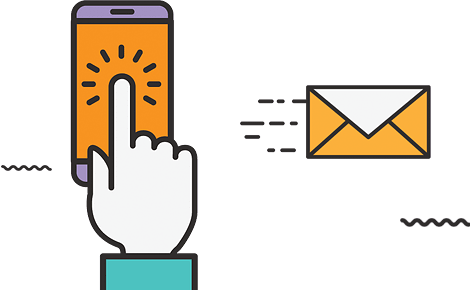One-Page Marketing Plan: A Step-by-Step Guide to Success
Creating a successful marketing strategy can feel overwhelming. Many businesses pour their time and resources into their products or services, only to find themselves lost in the noise of the market. Without a clear marketing plan, all that effort may go to waste. Enter the one-page marketing plan—an effective solution for businesses of all sizes. At Cody Crunch Media, we specialize in helping businesses craft strategic marketing plans that drive real results.
Defining Your Target Market
Defining Your Ideal Customer
The first step in marketing success is understanding who your customers are. This includes knowing their demographics, interests, needs, and pain points. For example, if you sell homemade dark chocolate, your ideal customer might be health-conscious individuals seeking a delicious treat. Clarity about your target audience helps you create messages that resonate with them.
Narrowing Your Focus
Next, narrow your target audience. Focusing on a niche allows your marketing efforts to be more efficient. Instead of trying to please everyone, target a specific group. This could mean emphasizing premium dark chocolate for health lovers rather than a general chocolate crowd. When you narrow your focus, you often see a higher return on investment (ROI) due to less competition.
Identifying Your Target Audience’s Needs
Discover what drives your audience. What do they value most? Tailor your marketing message accordingly. By addressing their needs and desires, you can connect with potential customers more deeply.
Crafting Your Marketing Message
Identifying Your Unique Selling Proposition (USP)
Your unique selling proposition is what sets you apart from the competition. It could be the special ingredients in your chocolate or your commitment to sustainability. Clearly communicating your USP helps potential customers understand why they should choose you.
Leveraging Human Emotions
Emotions play a key role in purchasing decisions. Marketing that engages feelings like love, pride, or even fear often succeeds better. Think about campaigns that tug at heartstrings. They often have a lasting impact, making customers more likely to remember your brand.
The Power of “Serving”
Reframe your sales message by focusing on how you serve your customers. If your homemade chocolate can boost someone’s mood or be a perfect gift, highlight that in your marketing. People want solutions to their problems, so showing them how your product can help is crucial.
Choosing the Right Media Channels
Understanding Your Audience’s Media Consumption
Match your marketing efforts to where your audience spends their time. If your target market is young, social media platforms like Instagram and Facebook are often great choices. For older audiences, consider traditional media like newspapers or TV.
Budget-Friendly Marketing Strategies
You don’t need a large budget to market effectively. Utilize social media, word-of-mouth, or even free local events to get your message out. If you have a little more to spend, consider targeted ads on platforms that fit your audience.
ROI and Channel Optimization
Track your marketing efforts to see what works. Understanding the return on investment for each channel helps you focus resources on the most effective strategies. This tracking provides insight into where to spend your time and money.
Lead Generation and Nurturing
Capturing Leads Effectively
Gather contact information from potential customers using various methods. This could include sign-up forms, free samples, or contests. Collecting leads is vital for future marketing efforts.
Lead Nurturing Strategies
Keep your leads engaged with regular communication. Use email, social media, or even direct mail. Share helpful tips, updates, or special offers. This consistent interaction can move them closer to making a purchase.
Building a Customer Relationship Management (CRM) System
Store lead information in a way that is easy to manage. Whether it’s a simple Excel spreadsheet or a more complex CRM system, have a method to track interactions and follow-ups. This organization is crucial for successful relationships and sales conversions.
Delivering a World-Class Customer Experience
The Importance of Post-Sale Engagement
Turning a one-time buyer into a repeat customer requires excellent post-sale service. Follow up with customers to ensure they’re satisfied. Ask for feedback and offer additional products that complement their original purchase.
Creating a Strong Referral System
Encourage happy customers to refer others to your business. Offer incentives like discounts or loyalty points. A solid referral program can expand your customer base significantly, often at a lower cost than traditional marketing.
Lifetime Customer Value (LTV)
Focusing on building long-term relationships can lead to significant profits. Repeat customers often spend more over time and can become brand advocates. It’s worth investing in their experience to encourage loyalty.
Measuring and Adjusting Your Marketing Plan
Analyzing Key Performance Indicators (KPIs)
To ensure success, track important KPIs such as conversion rates, website traffic, and customer acquisition costs. Adjust your marketing strategy based on real data.
Testing and Optimization
Regularly test different strategies to identify what works best. A/B testing, feedback loops, and ongoing optimization keep your marketing plan effective.
Keeping Up with Market Trends
Stay ahead of competitors by keeping up with industry trends. Adapt and evolve your marketing strategies as needed.
The Role of SEO in a One-Page Marketing Plan
One key component of any marketing plan is SEO (Search Engine Optimization). Implementing a strong SEO strategy helps your website rank higher in search engine results, increasing visibility and attracting potential customers. Keywords like original ranking play a crucial role in ensuring that your content remains search engine friendly.
Conclusion
A one-page marketing plan is a powerful tool that simplifies your strategy and maximizes results. By defining your target market, crafting a compelling message, selecting the right media channels, and nurturing leads, you can achieve sustained business growth. If you need expert assistance in developing your marketing plan,
Cody Crunch Media is here to help. Contact us today and let’s turn your marketing efforts into measurable success!
FAQ – Frequently Asked Questions
1. What is a one-page marketing plan?
A one-page marketing plan is a simplified strategy that outlines your target audience, messaging, media channels, and goals in a single page.
2. How do I define my ideal customer?
Identify demographics, interests, pain points, and needs to tailor your marketing efforts effectively.
3. Why is narrowing my focus important?
Focusing on a niche improves efficiency, increases ROI, and reduces competition.
4. What is a unique selling proposition (USP)?
Your USP is what makes your product or service unique and valuable to customers.
5. How can I generate leads?
Use sign-up forms, giveaways, and targeted content to capture potential customer information.
6. What are budget-friendly marketing strategies?
Social media, word-of-mouth marketing, and email campaigns are cost-effective ways to promote your brand.
7. How do I measure my marketing plan’s success?
Track KPIs such as website traffic, conversion rates, and customer acquisition costs to refine your strategy.
8. What role does SEO play in marketing plans?
SEO helps improve your website’s ranking, ensuring more visibility and organic traffic.
9. How can I create a referral system?
Offer incentives like discounts or rewards to encourage happy customers to refer others.
10. Why is post-sale engagement important?
Following up with customers strengthens relationships and increases customer loyalty.





